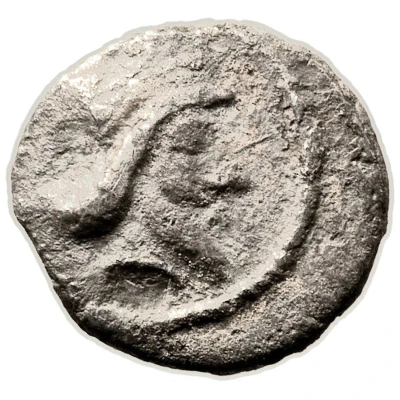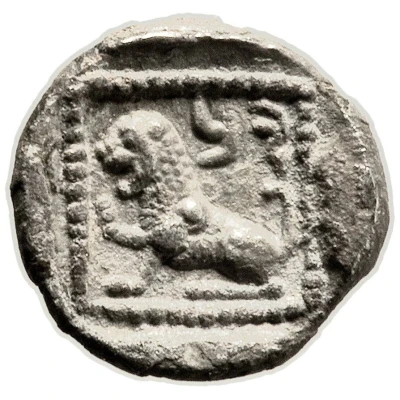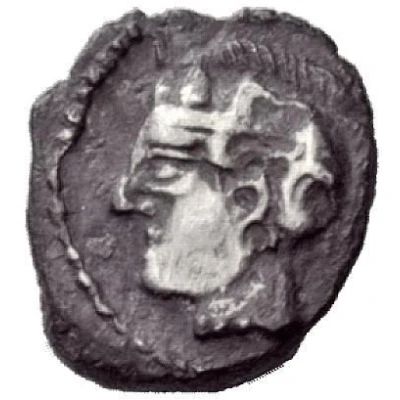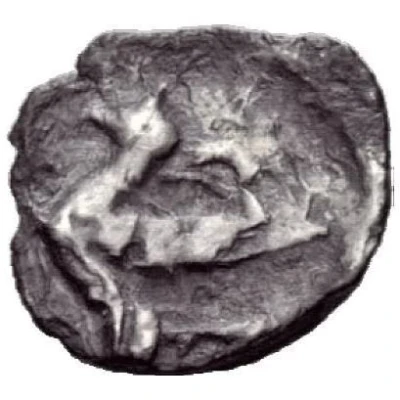


© Heritage Auctions
Ma'ah-Obol - Sanballat II Samaria 539 BC - 332 BC
| Silver | 0.61 g | 7 mm |
| Issuer | Satrapy of Samaria (Achaemenid Satrapies) |
|---|---|
| Type | Standard circulation coin |
| Years | 539 BC - 332 BC |
| Value | 1 Ma'ah-Obol = 1⁄24 Shekel |
| Currency | Shekel (539-332 BCE) |
| Composition | Silver |
| Weight | 0.61 g |
| Diameter | 7 mm |
| Shape | Round (irregular) |
| Technique | Hammered |
| Demonetized | Yes |
| Updated | 2024-10-10 |
| Numista | N#98664 |
|---|---|
| Rarity index | 100% |
Reverse
Lion seated left, all within square border of dots
Lettering: שן
Translation: Sanballat
Comment
Perhaps this is the Sanballat II reffered to by Josephus as the one who "had been sent to Samaria as a satrap by Darius the last king".David Hendin Guide to Biblical Coins Fifth Edition, p 110
Interesting fact
One interesting fact about the Ma'ah-Obol coin is that it features an image of a lion, which was a symbol of the Achaemenid Empire, on one side, and an inscription in Aramaic on the other side, which reads "Sanballat, the governor of Samaria" (Hendin, 2007). This coin was used as a means of payment and trade during the reign of Sanballat II, who was a Persian satrap (governor) of the Satrapy of Samaria, which was a province of the Achaemenid Empire. The use of Aramaic script on the coin reflects the cultural and linguistic influence of the empire on the region.

